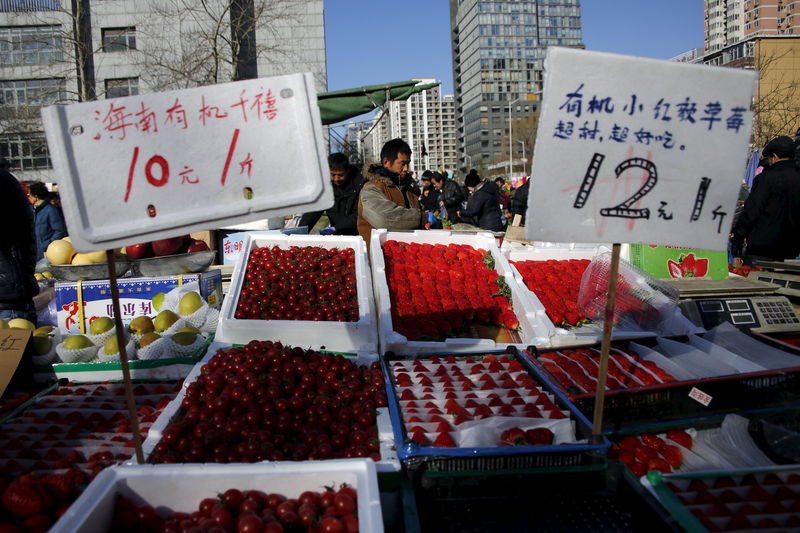(Bloomberg) -- China’s inflation pressures moderated in December as commodity prices and food costs slid, giving policy makers scope to cut interest rates to cushion the economy’s downturn.
The producer price index rose 10.3% from a year earlier, down from November’s 12.9%, while the consumer price index increased 1.5%, compared with 2.3% in November. Both came in lower than economists’ expected.
The inflation surprise adds further impetus to calls for the central bank’s first cut in its key policy interest rate since April 2020, possibly as early as next week. Authorities have shifted to a more pro-growth bias this year as a property market slump and repeated virus outbreaks threaten the outlook.
Read More: Goldman Lowers China 2022 Growth Forecast to 4.3% on Omicron
“The probability of a rate cut in the first quarter is high, and the closest window is this month,” said Bruce Pang, head of macro and strategy research at China Renaissance Securities Hong Kong Ltd. Consumer inflation “will not be a concern in 2022” and the core measure, which strips out volatile food and energy costs, will stay muted below 1.5%, he said.
The central bank has already freed up cheap long-term funding for banks, while the government has brought forward debt sales in an attempt to speed up fiscal spending.
Read More: China Moves Toward Rate Cut Just as World Starts to Tighten
The government took a number of measures recently to curb sharply rising energy and raw materials prices, with signs they could be having a desired effect. However, the emergence of omicron-variant virus cases is likely to be a defining factor in coming weeks, given that China is the world’s biggest producer and consumer of raw materials. If the outbreak continues to spread, some supply-side disruptions could ensue.
What Bloomberg Economics Says...
The takeaway from the December retreat in China’s factory-gate and consumer price inflation: the central bank can rest easy if -- as we expect -- it adds more stimulus to support the economy. Producer price inflation eased for a second consecutive month, while consumer price inflation dropped back below 2%.
Eric Zhu, China economist
For the full report, click here.
Consumer inflation remained subdued as virus control measures impeded consumption and weighed on demand, especially for prices of services. Core CPI rose 1.2%, the same as in November.
“The favorable inflation trend provides the time window for monetary easing. We expect the People’s Bank of China to cut the medium-term lending facility rate in the coming months,” said Zhaopeng Xing, an economist at Australia & New Zealand Banking Group (OTC:ANZBY) Ltd.
China’s tech-heavy ChiNext Index rose as much as 2.2% after the inflation data was released, it’s steepest gain since Nov. 22. The gauge had been falling every day since the new year.
Food prices fell in December, with pork prices dropping almost 37% and vegetable price gains slowing. The spread of the more transmissible omicron variant threatens to temporarily drive prices up again if strict mobility restrictions are widened. The upcoming Lunar New Year holidays will also see a surge in demand for staple foods and thus higher prices.
Read More: Global Supply Chains Brace for Impact as Omicron Reaches China
For the full year, factory gate prices rose 8.1%, while consumer prices increased 0.9%. Economists expect consumer prices to grow 2.2% in 2022, and factory-gate prices to gain 4% for the full year, according to the median estimates in a Bloomberg survey.
(Updates with comments from economists, additional details)
©2022 Bloomberg L.P.
